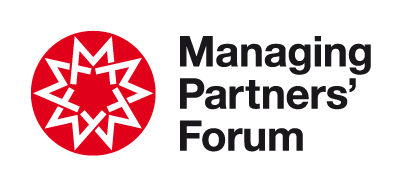October’s MTT meeting, hosted by Mazars, was an interactive session hosted by Meirion Jones, director of Client Critical, and leading professional services consultant, trainer and coach, about the challenges that line managers face and how to put things right when line management goes wrong.
Jones used Patrick Lencioni’s book ‘The Five Dysfunctions of a Team’ as the focal point for the discussion.
The book positions itself as a leadership fable, which means that rather than developing a series of models produced by business school research, it presents issues through a narrative about a dysfunctional leadership team who are responsible for their organisation’s strategy, tactics, logistics and operations. They are failing and the organisation is foundering. This is down to five leadership dysfunctions:
- Absence of trust – although managers and team leaders share a common purpose, and should be looking to each other for support, strength and guidance, they are not exhibiting these behaviours.
- Fear of conflict – each member of the team hates at least one other person on the team, but no-one calls anyone out. Instead there is a simmering stew of passive aggression. This leads to affiliations forming outside formal meetings where people criticise others behind each other’s backs.
- Lack of commitment – people feel so discouraged, disengaged and demoralised that they switch off. Decisions that need to be made are deferred and there is a lack of creative strategic thought. Consequently, the meetings drift, strategy drifts and eventually the organisation itself starts to drift.
- Avoidance of accountability – because the team’s goals aren’t being achieved, and roles and responsibilities aren’t being realised team members go out of their way to avoid accountability. When things go wrong, they pass the buck and blame each other.
- Inattention to results – consequently, overarching goals including financial performance and key metrics suffer because the leadership are investing so much time and energy in conflict and paranoia.
Five dysfunctions at work
Jones uses these principles in his leadership development work, which includes conducting interviews with partners, team leaders and executive board members to get a sense of how apparent these negative qualities are in their organisations, and decide what changes are needed to avoid/mitigate their effects. Jones shared some feedback from team leaders who recognised these traits in their organisations. This was not all the feedback, but he deliberately picked examples that highlighted each of Lencioni’s five dysfunctions.
Absence of trust: “Everyone is so concerned about individual performance, but to even think of asking one of my fellow partners to help on something would just be seen as weakness.”
Fear of conflict: “There’s a conformity bias at work here, especially when there are so many other pressures. And it’s so much easier to hold your counsel than it is to actively engage, especially when there’s a consensus view, perhaps in opposition to yours.”
Lack of commitment: “Why should I get involved in committee meetings that use up valuable time that I could be spending fee-earning?”
Avoidance of accountability: “I don’t dare call Alan out for not doing something, because I know that if I do, Alan will call me out. So, we have this kind of unspoken pact of complicity.”
Inattention to results: “We keep reinventing the wheel. Initiatives aren’t given enough time to evolve. As soon as an idea seems to be encountering any kind of obstacle, it’s put to bed. There seems to be a Stalinist approach to success and failure. Failures tend to be brushed under the carpet.”
In reality, most team functions are successful, but equally, most organisations could manage their teams more effectively if they identified and addressed dysfunctional relationships and behaviours.
Three discussion questions
Jones proposed three questions for group discussion:
- In your experience, which dysfunctions do you feel are most pronounced in your organisations or organisations you’ve been working with, and most critically need addressing?
- What impact do these dysfunctions have, and what would be the practical consequences of successfully addressing them?
- What can teams do in practice to successfully deal with their dysfunctions?
Jones asked delegates to focus on teams rather than entire organisations, as he was looking for a granular discussion, but there are organisational wide implications too. One delegate asked whether Jones believed that every team is dysfunctional, to which the response was: “Just as every human being has the possibility of illness, every team has the possibility of becoming dysfunctional… A degree of mindfulness is required to make sure these habits don’t manifest.”
Delegates discussed these issues in groups and then reported back. Top concerns included managing and responding to conflict appropriately and deciding when to step in as a manager. The point was made that conflict is not necessarily negative for a team, particularly as fear of conflict can also lead to failure to measure performance and accept accountability.
Trust was another important issue as it needs to be strong at the top of the organisation in order to cascade down. There was a lot of curiosity around how to build a high-trust team and organisation. One key point was that professional services firms often fail to express appreciation of their key people. Another interesting phenomenon in professional services is the trust tax – things cost more and take longer in low-trust organisations.
Professional services tend to have a high degree of trust between departments and staff, but there are also dynamics that impact on the ability to develop and maintain trusted relationships. Communication and trust are closely entwined. As firms grow bigger, it is more difficult to generate trust as partners and staff don’t all know each other. Activities that damage trust include asking for feedback and not acting on it. People are less likely to trust their managers if their voices are not heard in the organisation. And when their feedback is acted on, this needs to be shared across the business. So, communication is an important factor in establishing trust as feedback that is not acted on can be damaging to the long-term health of the organisation.
Practical impact of overcoming team dysfunctionality
The discussion moved on to the practical impact of addressing one or more of the five dysfunctions. Lencioni says that overcoming team dysfunctions results in a shorter time to market, are more agile organisations able to invest in new product development and identify and pursue new markets more quickly than their competitors. Therefore, there is a direct bottom line impact. Teams that trust each other provide a better client experience. It is clear to clients who deal with different functions of a firm whether teams trust each other and work well together. Therefore, trust and collaboration are the foundation of good professional advice.
Top tips for good line management
The discussion turned to practical steps forward. Unless leaders recognise dysfunction, they cannot address it, observed Jones. The group identified effective leadership qualities notably honesty, courage and sensitivity. In practice, this means leaders need to actively listen, and have the honesty to call out bad behaviours and ensure that remuneration structures do not reward them. Good line management requires sensitivity and understanding and the ability to develop an emotionally neutral framework to diffuse conflict.
Another cultural point is the importance of mutually respecting contribution – this too is about communication issue as it involves ensuring that everyone understands what each colleague brings to the team. Team communication problems in larger professional services firms are commonly related to misunderstandings around respective contributions. Ultimately good line management is about good communication, and Lencioni offers a framework for awareness and improvement.
Joanna Goodman

